Discover effective strategies and expert advice for achieving and maintaining excellent oral health. Explore our comprehensive guide to dental care and hygiene for a confident, bright smile.
Oral health extends far beyond a radiant smile. It’s a fundamental pillar of holistic well-being, intricately linked to the health of your entire body. From the strength of your teeth to the condition of your gums, the state of your mouth plays a pivotal role in shaping your overall vitality.
Understanding the profound connection between oral health and your body’s harmony empowers you to take proactive steps in nurturing a healthy smile that radiates well-being from within.

The Importance of Oral Health
Oral health isn’t just about having a dazzling smile—it’s intricately connected to your overall well-being. Beyond the surface, the health of your mouth plays a significant role in your body’s holistic harmony.
Understanding the Link Between Oral Health and Overall Well-Being
I. Gateway to the Body:
- Your mouth serves as a gateway to your body. The health of your teeth, gums, and oral tissues directly influences your body’s overall health.
II. Systemic Connections:
- Oral health is linked to various systemic conditions. Gum disease, for example, is associated with diabetes, heart disease, respiratory infections, and even pregnancy complications.
III. Inflammation Connection:
- Inflammation from gum disease can spread through the bloodstream, potentially affecting distant organs and systems.
IV. Chronic Conditions:
- Chronic conditions like diabetes can impact oral health. Gum disease can also make it harder to control blood sugar levels.
V. Respiratory Health:
- Oral health influences respiratory health. Bacteria from the mouth can be aspirated into the lungs, contributing to pneumonia and other respiratory infections.
VII. Nutrition and Speech:
- Good oral health allows for proper chewing and digestion, enabling the body to absorb nutrients. It also plays a role in clear speech.
VIII. Quality of Life:
- Oral health affects your quality of life. Pain, discomfort, and tooth loss can hinder your ability to enjoy food, socialize, and feel confident.
IX. Preventive Approach:
- Taking care of your oral health through regular check-ups, proper oral hygiene, and a balanced diet is a preventive measure against potential systemic issues.
X. Holistic Well-Being:
- A healthy mouth contributes to holistic well-being. By caring for your oral health, you invest in a healthier body and a better quality of life.
Summary:
Recognizing the profound connection between oral health and overall well-being empowers you to prioritize oral care. By nurturing your oral health, you’re taking a proactive step toward a healthier, happier, and more vibrant life.
Daily Dental Care Routine
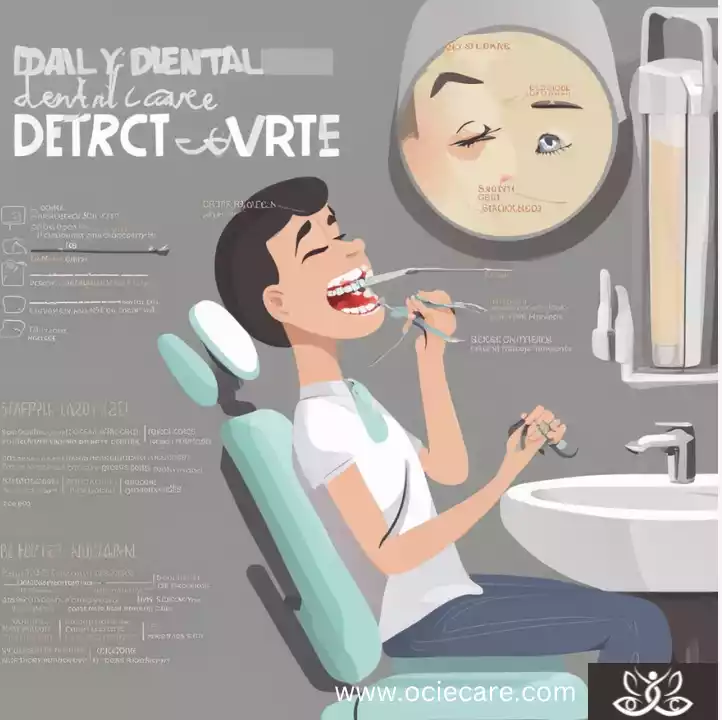
Maintaining optimal oral health requires more than a casual approach—it demands a consistent and effective daily dental care routine. By incorporating simple yet impactful practices into your daily regimen, you can safeguard your smile and promote overall well-being.
A. Brushing Techniques and Best Practices
I. Brush Twice a Day:
- Brush your teeth at least twice a day, preferably in the morning and before bedtime. This routine removes food particles and plaque that accumulate throughout the day.
II. Use Fluoride Toothpaste:
- Opt for fluoride toothpaste to strengthen tooth enamel and prevent cavities. Use a pea-sized amount on your toothbrush.
III. Proper Brushing Technique:
- Hold your toothbrush at a 45-degree angle to your gums. Use gentle circular motions and short back-and-forth strokes. Don’t forget to brush your tongue to eliminate bacteria that cause bad breath.
IV. Duration:
- Brush for a minimum of two minutes. Set a timer or listen to a short song to ensure you’re spending adequate time on each quadrant of your mouth.
V. Soft-Bristled Toothbrush:
- Choose a soft-bristled toothbrush to prevent gum irritation and enamel erosion. Replace your toothbrush every three to four months or sooner if the bristles become frayed.
B. Importance of Regular Flossing and Interdental Cleaning
I. Daily Flossing:
- Flossing is as crucial as brushing. It removes plaque and food particles from between teeth and below the gumline, where a toothbrush can’t reach effectively.
II. Proper Flossing Technique:
- Gently guide the floss between your teeth using a back-and-forth motion. Curve the floss against the tooth and slide it up and down to remove debris.
III. Interdental Cleaning:
- Consider using interdental brushes or soft picks to clean between teeth. These tools are particularly useful for people with wider gaps between teeth.
IV. Flossing Before or After Brushing:
- Whether you floss before or after brushing is less important than simply ensuring you do it consistently.
V. Regular Dental Check-ups:
- While a solid daily routine is essential, regular dental check-ups (typically every six months) allow your dentist to spot potential issues and provide professional cleanings.
Summary:
A disciplined daily dental care routine is an investment in your oral health and overall well-being. By following proper brushing techniques, incorporating regular flossing, and visiting your dentist regularly, you’re setting the stage for a bright and healthy smile that reflects your commitment to your overall health.
Choosing the Right Dental Products
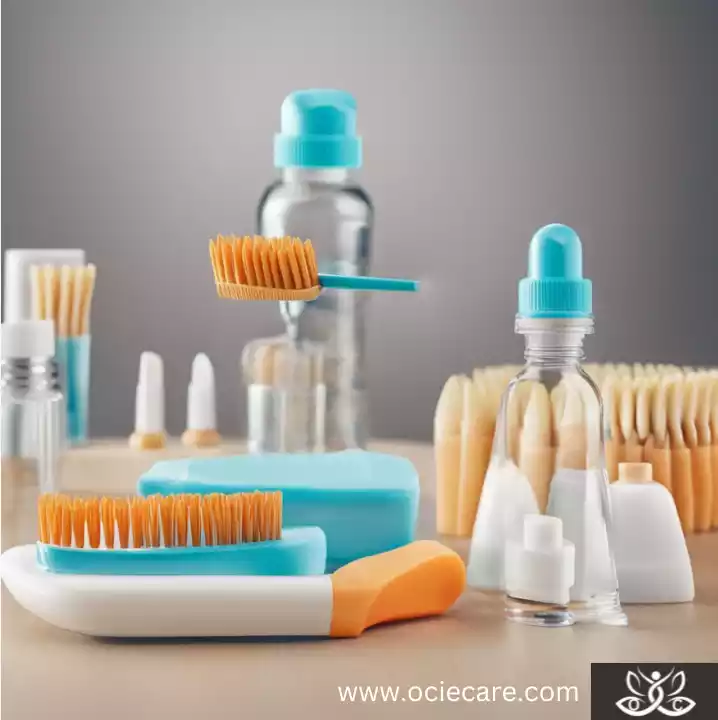
Maintaining optimal oral health starts with the right dental products. From toothbrushes to toothpaste and mouthwash, selecting the right tools can make a significant difference in your daily dental care routine.
A. Selecting the Right Toothbrush and Toothpaste
Toothbrush:
I. Soft Bristles:
- Choose a toothbrush with soft bristles. Soft bristles effectively clean your teeth without causing damage to your gums or enamel.
II. Size and Shape:
- Opt for a toothbrush head that comfortably fits in your mouth and reaches all areas of your teeth.
III. Manual vs. Electric:
- Both manual and electric toothbrushes can be effective. Electric toothbrushes with rotating or oscillating heads may provide a more thorough clean for some individuals.
Toothpaste:
I. Fluoride Content:
- Look for toothpaste with fluoride, a mineral that helps strengthen enamel and prevent cavities.
II. Specific Needs:
- Consider toothpaste tailored to your specific needs, such as sensitivity, whitening, or gum health.
III. Avoid Harsh Ingredients:
- Steer clear of toothpaste with harsh abrasives or excessive whitening agents, as these can potentially damage enamel over time.
B. Exploring the Benefits of Mouthwash
I. Fresh Breath:
- Mouthwash can help combat bad breath by killing bacteria that contribute to foul odors.
II. Cavity Prevention:
- Some mouthwashes contain fluoride, providing an additional layer of protection against cavities.
III. Gum Health:
- Antimicrobial mouthwashes can reduce plaque and gingivitis-causing bacteria, promoting healthier gums.
IV. Oral Irrigation:
- Certain mouthwashes can serve as an oral irrigation tool, flushing out debris from hard-to-reach areas.
V. Consult Your Dentist:
- If you’re unsure which mouthwash to use, consult your dentist. They can recommend a mouthwash that aligns with your specific oral health needs.
Important Note: While mouthwash is a valuable addition to your routine, it’s not a substitute for brushing and flossing. It should complement your daily oral care, not replace it.
Summary:
Choosing the right dental products is an investment in your oral health. By selecting a toothbrush, toothpaste, and mouthwash that align with your needs and preferences, you’re taking proactive steps towards maintaining a healthy and radiant smile. Regular brushing, flossing, and using mouthwash, along with regular dental check-ups, create a comprehensive approach to lifelong oral well-being.
Maintaining Healthy Gums
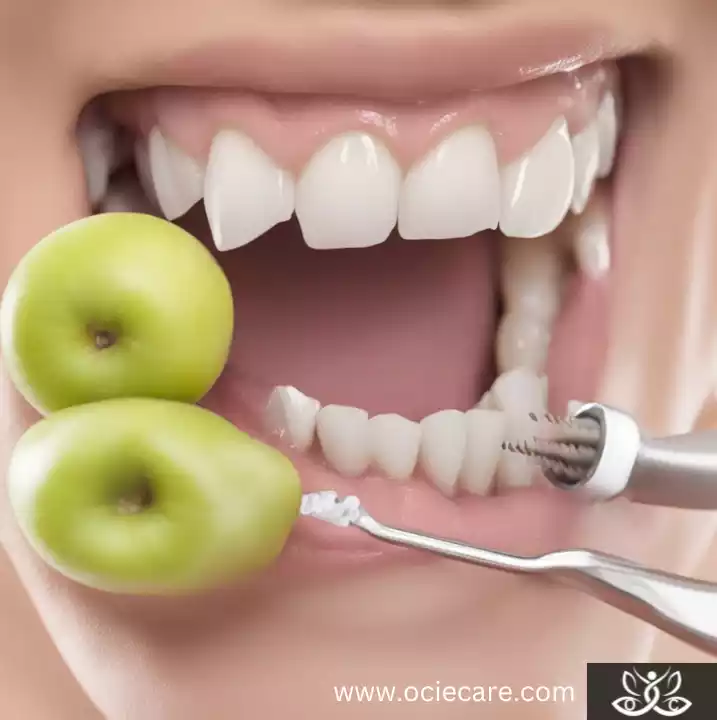
Healthy gums are the foundation of a strong and vibrant smile. Proper care and attention to your gum health are essential for preventing gum diseases and maintaining overall oral well-being.
A. Preventing and Managing Gum Diseases
I. Regular Oral Care Routine:
- Follow a consistent routine of brushing and flossing to remove plaque and food particles that can contribute to gum diseases.
II. Professional Cleanings:
- Schedule regular dental cleanings to remove tartar buildup that brushing and flossing alone can’t eliminate.
III. Healthy Diet:
- Consume a balanced diet rich in nutrients, vitamins, and minerals. Avoid excessive sugary or acidic foods that can harm your gums and teeth.
IV. Avoid Smoking:
- Smoking increases the risk of gum diseases. Quitting smoking can significantly improve your gum health.
V. Recognize Early Signs:
- Be aware of early signs of gum diseases, such as redness, swelling, bleeding while brushing or flossing, and persistent bad breath.
B. Tips for Reducing Gum Inflammation
I. Proper Brushing Technique:
- Brush your teeth using gentle circular motions and short back-and-forth strokes. Avoid brushing too aggressively, as it can irritate your gums.
II. Use a Soft-Bristled Brush:
- Choose a toothbrush with soft bristles to prevent gum irritation. Replace your toothbrush regularly to maintain its effectiveness.
III. Flossing Technique:
- Gently slide floss between your teeth, curving it against each tooth. This removes debris and plaque without harming your gums.
IV. Rinse with Warm Salt Water:
- A warm saltwater rinse can help soothe inflamed gums. Mix a teaspoon of salt in a cup of warm water and rinse for about 30 seconds.
V. Antimicrobial Mouthwash:
- Consider using an antimicrobial mouthwash recommended by your dentist. It can help reduce plaque and bacteria that contribute to gum inflammation.
VI. Avoid Aggravating Foods:
- Limit foods that can exacerbate gum inflammation, such as sugary snacks and beverages.
VII. Stay Hydrated:
- Drinking plenty of water helps maintain moisture in your mouth and supports overall gum health.
VIII. Regular Dental Check-ups:
- Regular visits to your dentist allow early detection and management of gum issues before they worsen.
IX. Stress Management:
- High stress levels can contribute to gum inflammation. Practicing stress-relief techniques like meditation or yoga can help.
Summary:
Maintaining healthy gums is an integral part of your oral health journey. By adopting proper oral hygiene practices, being vigilant about early signs of gum issues, and seeking professional guidance, you can ensure your gums remain strong, resilient, and free from inflammation. Your dedication to gum health contributes not only to a beautiful smile but also to your overall well-being.
Nutrition for Strong Teeth

A well-balanced diet doesn’t just contribute to overall health—it plays a pivotal role in maintaining strong teeth and a healthy smile. What you eat directly influences the condition of your teeth, so making mindful food choices can have a lasting impact on your oral well-being.
A. Foods that Promote Dental Health
I. Calcium-Rich Foods:
- Calcium is a key component of strong teeth. Include dairy products like milk, cheese, and yogurt, as well as fortified plant-based alternatives.
II. Crunchy Fruits and Vegetables:
- Apples, carrots, celery, and other crunchy fruits and vegetables stimulate saliva production, which helps cleanse teeth and neutralize acids.
III. Leafy Greens:
- Spinach, kale, and other leafy greens are rich in vitamins and minerals essential for maintaining gum health.
IV. Lean Proteins:
- Lean meats, poultry, fish, and plant-based protein sources like beans and lentils provide nutrients necessary for gum tissue repair.
V. Nuts and Seeds:
- Almonds, walnuts, and seeds are packed with minerals and healthy fats that contribute to strong teeth and gum health.
VI. Water:
- Staying hydrated is essential for saliva production, which aids in cleaning teeth and preventing dry mouth.
B. Avoiding Foods that Can Harm Teeth
I. Sugary Snacks and Drinks:
- Limit sugary snacks, candies, and sugary beverages. Bacteria in your mouth feed on sugar, producing acids that can lead to tooth decay.
II. Sticky Foods:
- Sticky candies and snacks can adhere to teeth, increasing the risk of cavities.
III. Acidic Foods and Drinks:
- Citrus fruits, fruit juices, and acidic beverages can weaken enamel over time. Consume them in moderation and rinse your mouth with water afterward.
IV. Soda and Energy Drinks:
- These drinks are highly acidic and loaded with sugars. They can erode enamel and lead to tooth decay.
V. Excessive Coffee and Tea:
- Dark-colored beverages like coffee and tea can stain teeth over time. Rinse your mouth with water after consumption.
VI. Alcohol and Tobacco:
- Excessive alcohol consumption and tobacco use contribute to gum diseases and oral health issues.
VII. Hard Candy and Ice:
- Chewing on hard candy or ice can crack or chip teeth. Avoid using your teeth as tools to open packages or bottles.
VIII. Frequency Matters:
- Even healthy foods can contribute to tooth decay if consumed frequently throughout the day. Space out snacks and meals to give your teeth time to recover.
Summary:
By choosing foods that promote dental health and avoiding those that can harm your teeth, you’re actively contributing to the strength and longevity of your smile. A balanced diet not only supports your overall well-being but also ensures that your teeth remain healthy, vibrant, and ready to shine.
Managing Tooth Sensitivity

Tooth sensitivity can be uncomfortable and disruptive, but with the right understanding and care, you can alleviate and prevent this common issue. Discover the causes behind tooth sensitivity and adopt strategies to bring relief to your sensitive teeth.
A. Common Causes of Tooth Sensitivity
I. Exposed Dentin:
- Dentin, the layer beneath your tooth enamel, can become exposed due to enamel erosion, gum recession, or worn-down teeth.
II. Gum Recession:
- Receding gums can expose the tooth’s sensitive root surfaces, leading to increased sensitivity.
III. Cavities or Tooth Decay:
- Decay that reaches the dentin layer can cause sensitivity, especially when eating or drinking something hot, cold, or sweet.
IV. Cracked Teeth:
- Cracks or fractures in teeth can expose the sensitive inner layers, causing discomfort.
V. Bruxism (Teeth Grinding):
- Grinding your teeth can wear down enamel and expose dentin, leading to sensitivity.
VI. Acidic Foods and Drinks:
- Consuming acidic foods and beverages can erode enamel, making teeth more sensitive.
VII. Aggressive Brushing:
- Brushing too hard can wear down enamel and contribute to sensitivity.
VIII. Dental Procedures:
- Teeth whitening, dental cleanings, and certain treatments can cause temporary sensitivity.
B. How to Alleviate and Prevent Sensitivity
I. Desensitizing Toothpaste:
- Use desensitizing toothpaste with ingredients like potassium nitrate or strontium chloride. These can help block pain signals.
II. Soft-Bristled Toothbrush:
- Switch to a soft-bristled toothbrush and practice gentle brushing techniques to avoid further enamel erosion.
III. Fluoride Rinse:
- Use a fluoride rinse or gel prescribed by your dentist to strengthen enamel and reduce sensitivity.
IV. Avoid Acidic Foods:
- Limit consumption of acidic foods and drinks to protect enamel.
V. Use a Mouthguard:
- If you grind your teeth, consider using a mouthguard at night to prevent enamel wear.
VI. Maintain Good Oral Hygiene:
- Brush and floss regularly to prevent cavities and gum issues that can contribute to sensitivity.
VII. Regular Dental Check-ups:
- Schedule regular dental check-ups to identify and address any underlying issues causing sensitivity.
VIII. Avoid Whitening Products:
- If sensitivity is an issue, avoid using whitening products until the sensitivity is under control.
IX. Avoid Extreme Temperatures:
- Avoid extreme temperatures in foods and drinks to minimize sensitivity triggers.
X. Fluoride Treatments:
- In-office fluoride treatments can strengthen enamel and reduce sensitivity.
Summary:
By understanding the causes of tooth sensitivity and taking proactive steps, you can manage and even prevent this discomfort. Consistent oral care, avoiding triggers, and consulting your dentist are key to maintaining a healthy, pain-free smile.
Regular Dental Check-ups

Regular dental check-ups are the cornerstone of maintaining optimal oral health. They provide more than just a thorough cleaning—they offer preventive care, early detection of issues, and a pathway to a confident and vibrant smile.
A. Importance of Routine Dental Visits
I. Early Problem Detection:
- Regular check-ups allow your dentist to identify potential issues like cavities, gum disease, or oral cancer in their early stages. This enables prompt treatment and prevents complications.
II. Preventive Care:
- Dental professionals can provide professional cleanings to remove plaque and tartar buildup, reducing the risk of cavities and gum disease.
III. Personalized Advice:
- Your dentist can offer tailored advice on oral hygiene, diet, and habits to maintain your oral health.
IV. X-rays and Assessments:
- X-rays and thorough assessments help identify hidden issues that might not be visible during routine care.
V. Gum Health:
- Your dentist will check your gums for signs of inflammation, recession, or gum disease, providing necessary guidance for improving gum health.
VI. Professional Cleaning:
- Even with diligent home care, professional cleanings are essential for removing stubborn plaque and tartar, preventing cavities and gum issues.
B. What to Expect During a Dental Check-up
I. Oral Examination:
- Your dentist will examine your teeth, gums, and oral tissues, looking for signs of cavities, gum disease, oral cancer, and other issues.
II. X-rays:
- X-rays are usually taken periodically to detect issues below the surface, such as cavities between teeth or problems with tooth roots.
III. Professional Cleaning:
- A dental hygienist will perform a professional cleaning, removing plaque, tartar, and stains from your teeth.
IV. Discussion:
- You’ll have the opportunity to discuss any concerns, questions, or changes you’ve noticed in your oral health.
V. Treatment Plan:
- If any issues are identified, your dentist will discuss treatment options and create a plan to address them.
VI. Advice:
- Your dentist will provide advice on maintaining good oral hygiene at home, including brushing and flossing techniques.
VII. Next Appointment:
- You’ll schedule your next dental appointment, usually within six months, for your next check-up and cleaning.
Summary:
Regular dental check-ups are essential for preventing dental problems and ensuring that your smile remains healthy and radiant. By committing to these visits, you invest in your long-term oral health and overall well-being.
Understanding Common Dental Issues
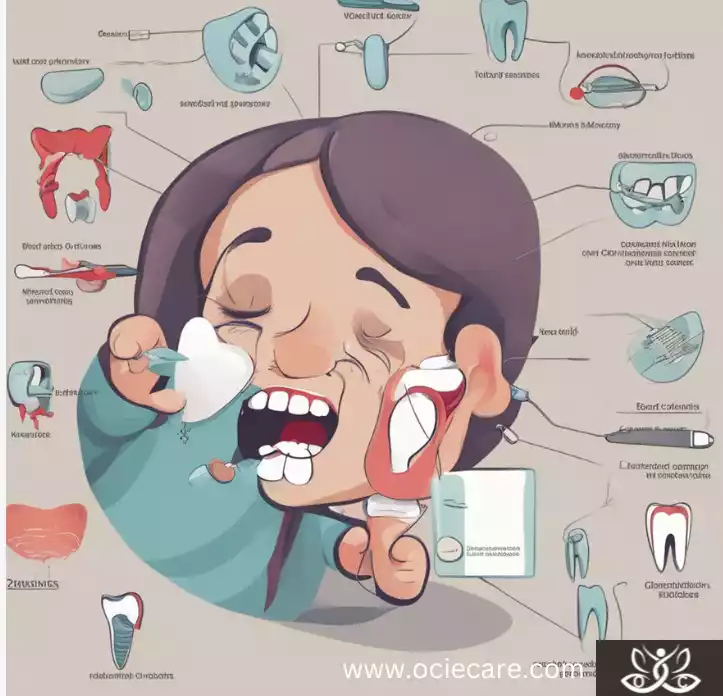
Maintaining a healthy smile requires understanding and addressing common dental issues promptly. By recognizing the signs and knowing how to take action, you can prevent these problems from escalating and ensure your oral health remains in top condition.
A. Exploring Cavities, Plaque Buildup, and Gum Disease
I. Cavities (Dental Caries):
- Cavities are areas of tooth decay caused by bacteria and acids wearing away the enamel. They appear as small holes or pits in the teeth.
II. Plaque Buildup:
- Plaque is a sticky film of bacteria that forms on teeth. If not removed through brushing and flossing, it can harden into tartar, leading to cavities and gum disease.
III. Gum Disease (Gingivitis and Periodontitis):
- Gum disease ranges from mild gingivitis (inflamed gums) to more severe periodontitis (gum infection that damages the bone supporting teeth). Symptoms include redness, swelling, bleeding, and bad breath.
B. How to Identify and Address These Issues
I. Cavities:
- Signs: Sensitivity, pain, visible holes in teeth.
- Addressing: Your dentist will remove the decayed portion and fill the cavity with appropriate materials, restoring the tooth’s structure.
II. Plaque Buildup:
- Signs: Sticky film on teeth, bad breath.
- Addressing: Maintain a strong oral hygiene routine with regular brushing, flossing, and professional cleanings to prevent plaque buildup.
III. Gum Disease:
- Signs: Red, swollen, bleeding gums; bad breath; receding gums.
- Addressing: Improve oral hygiene practices, receive professional cleanings, and, in severe cases, undergo treatments like scaling and root planing.
IV. Preventive Steps:
- Good Oral Hygiene: Brush twice a day, floss daily, and use mouthwash.
- Balanced Diet: Limit sugary and acidic foods.
- Regular Dental Visits: Schedule check-ups every six months to catch issues early.
- Avoid Tobacco: Smoking increases the risk of gum disease and other oral issues.
- Wear a Mouthguard: If you grind your teeth, protect them with a mouthguard.
V. Action Plan:
- Awareness: Regularly inspect your teeth, gums, and mouth for any changes or discomfort.
- Prompt Action: If you notice signs of cavities, plaque buildup, or gum disease, consult your dentist immediately.
Summary:
Understanding these common dental issues empowers you to take control of your oral health. By practicing good oral hygiene, seeking professional care, and staying vigilant about changes in your mouth, you can maintain a healthy smile and prevent these issues from becoming major concerns.
Promoting Oral Health in Children
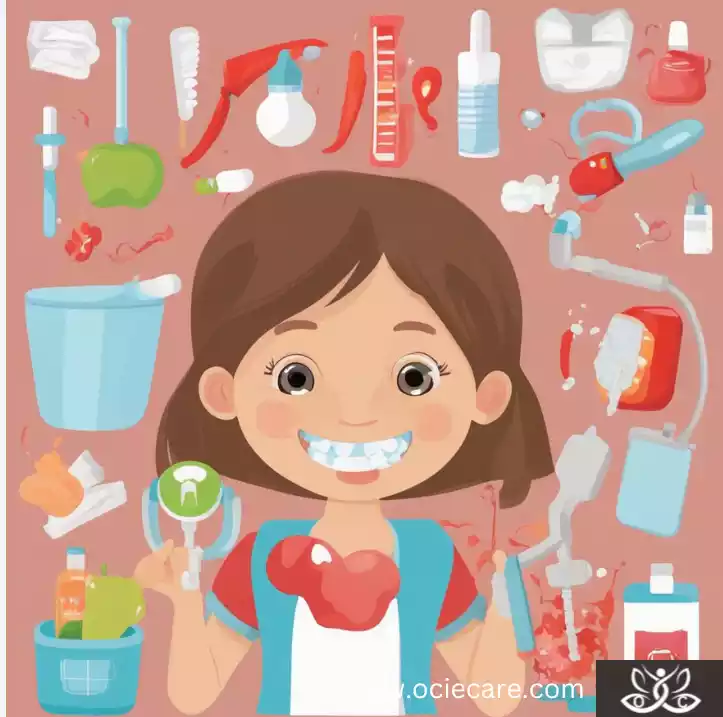
Instilling good oral hygiene habits in children sets the foundation for a lifetime of healthy smiles. By creating a positive dental experience and addressing their fears, you can ensure that children develop a strong oral health routine.
A. Establishing Good Oral Hygiene Habits in Kids
I. Start Early:
- Begin cleaning your child’s gums with a soft cloth before teeth emerge. As teeth appear, use an infant toothbrush.
II. Brushing:
- Teach proper brushing techniques using a pea-sized amount of fluoride toothpaste. Supervise brushing until they can do it effectively on their own.
III. Frequency:
- Encourage brushing at least twice a day, in the morning and before bed.
IV. Flossing:
- Once their teeth touch, introduce flossing as part of their routine.
V. Healthy Diet:
- Limit sugary snacks and drinks, and promote a diet rich in fruits, vegetables, and dairy products.
VI. Regular Dental Visits:
- Schedule their first dental visit by their first birthday, and continue with regular check-ups as recommended by the dentist.
VII. Lead by Example:
- Let them see you maintaining good oral hygiene practices.
B. Dealing with Children’s Dental Fears
I. Open Communication:
- Listen to their concerns and answer their questions honestly. Explain dental visits in a positive and simple manner.
II. Role Play:
- Pretend play with dental tools and visits to make it a familiar and non-threatening experience.
III. Choose a Pediatric Dentist:
- Pediatric dentists are trained to work with children and create a comfortable environment.
IV. Positive Reinforcement:
- Praise them for their cooperation during dental visits and reward their efforts with a small treat or activity.
V. Distraction:
- Bring their favorite toy or book to the dentist to keep them engaged and distracted.
VI. Avoid Negative Language:
- Avoid using words that may scare them, such as “pain,” “shot,” or “hurt.”
VII. Gradual Exposure:
- Start with short, positive visits and gradually increase the time as their comfort level grows.
VIII. Educational Materials:
- Use children’s books or videos that explain dental visits in a friendly and informative manner.
Summary:
Promoting oral health in children requires patience, consistency, and a nurturing approach. By establishing positive oral hygiene habits from a young age and addressing their dental fears with understanding and empathy, you lay the groundwork for a lifetime of healthy smiles and a positive attitude towards dental care.
Lifestyle Habits for a Healthy Smile
Your lifestyle choices play a significant role in the health of your smile. By understanding the impact of smoking, tobacco use, and stress on oral health, you can make informed decisions that contribute to a vibrant and lasting smile.
A. Effects of Smoking and Tobacco Use on Oral Health
I. Stained Teeth:
- Smoking and tobacco use can cause severe teeth staining, leading to a yellowed or brownish appearance.
II. Gum Disease:
- Tobacco use increases the risk of gum disease, which can lead to swollen, bleeding gums and even tooth loss.
III. Oral Cancer:
- Tobacco use, including smoking and chewing tobacco, is a major risk factor for oral cancer. It affects the lips, tongue, mouth, and throat.
IV. Bad Breath:
- Smoking and tobacco products contribute to persistent bad breath, also known as halitosis.
V. Delayed Healing:
- Smoking hinders the healing process after dental procedures like tooth extraction or oral surgery.
VI. Tooth Decay:
- Tobacco users have an increased risk of cavities due to the dry mouth and decreased saliva production associated with smoking.
VII. Diminished Sense of Taste and Smell:
- Smoking can affect your ability to taste and smell, impacting your overall sensory experience.
B. Managing Stress for Better Dental Well-Being
I. Bruxism (Teeth Grinding):
- Stress can lead to bruxism, where you grind or clench your teeth, causing enamel wear and other dental issues.
II. Canker Sores:
- Stress may trigger or exacerbate canker sores, which can be uncomfortable and affect your oral health.
III. Neglecting Oral Care:
- High stress levels can lead to neglecting oral hygiene routines, increasing the risk of dental issues.
IV. Gum Disease:
- Chronic stress can weaken the immune system, making it harder for the body to fight off gum infections.
V. Stress-Induced Eating Habits:
- Stress may lead to poor dietary choices, such as consuming sugary or acidic foods and drinks that harm your teeth.
VI. Coping Strategies:
- Engage in stress-reducing activities like exercise, meditation, yoga, or deep breathing exercises.
VII. Oral Hygiene Routine:
- Stick to your oral hygiene routine even during times of stress. Consistent care helps maintain oral health.
VIII. Professional Help:
- If stress is overwhelming, consider seeking professional help, such as counseling or therapy.
IX. Healthy Lifestyle:
- Adopt a balanced lifestyle with regular physical activity, a nutritious diet, and sufficient sleep to help manage stress.
Summary:
By being mindful of the impact of smoking, tobacco use, and stress on your oral health, you can make conscious choices that contribute to a healthier smile. Prioritize your well-being, practice good oral hygiene, and seek support when needed to maintain optimal oral health and overall vitality.
ProDentim – The Revolutionary Dental Product
Say goodbye to traditional dental products and hello to ProDentim – the only product in the world that combines the power of probiotics and nutrients to transform your oral health and overall well-being.
Imagine the biggest smile you’ve ever had, with fully rejuvenated gums and cemented teeth. Say goodbye to bad breath and hello to fresh breath that lasts.
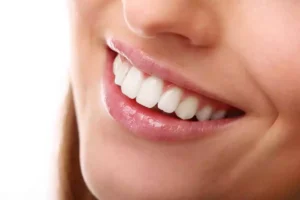
Try ProDentim today and experience the ProDentim difference – it’s unlike anything you’ve ever tried or experienced in your life before! Your smile will thank you.
Elevating Wellness Through Oral Health
In the journey towards optimal well-being, the significance of oral health cannot be overstated. Beyond the realm of smiles, it serves as a gateway to the intricate balance of the entire body. The interplay between healthy teeth, gums, and oral hygiene goes beyond aesthetics, encompassing systemic connections that impact our overall health. From preventing chronic conditions to fostering proper nutrition and clear speech, oral health is a linchpin of vitality.
By embracing a holistic approach to oral care—fostering good hygiene practices, attending regular check-ups, and making mindful lifestyle choices—you’re not just safeguarding your smile; you’re actively investing in your body’s well-being. As we understand more deeply the links between oral health and systemic health, the importance of this daily commitment becomes increasingly evident.
In a world where well-being is a cherished pursuit, oral health shines as a cornerstone. Let’s take charge of our oral care, embracing its role in shaping a life of vitality, vibrancy, and whole-body wellness.
FAQs
Q. Why is oral health important?
A. Oral health is crucial because it’s not just about having a beautiful smile. It’s linked to your overall well-being. Poor oral health can lead to various health issues, including gum disease, infections, and even systemic conditions like heart disease and diabetes.
Q. How often should I brush and floss my teeth?
A. It’s recommended to brush your teeth at least twice a day, ideally in the morning and before bedtime. Flossing should be done once a day to remove food particles and plaque from between teeth.
Q. What’s the role of regular dental check-ups?
A. Regular dental check-ups are essential for early detection of dental issues like cavities and gum disease. They also include professional cleanings to remove plaque and tartar that regular brushing and flossing can’t reach.
Q. What causes cavities?
A. Cavities are caused by a combination of factors, including bacteria in the mouth, frequent consumption of sugary or acidic foods and drinks, and poor oral hygiene practices.
Q. How can I prevent gum disease?
A. To prevent gum disease, maintain a regular oral hygiene routine of brushing and flossing. Also, avoid tobacco use, eat a balanced diet, and schedule regular dental check-ups.
Q. Can poor oral health affect other parts of my body?
A. Yes, poor oral health can have systemic effects. Bacteria from the mouth can enter the bloodstream and contribute to conditions like heart disease, diabetes, and respiratory infections.
Q. How can I manage dental anxiety?
A. If you experience dental anxiety, communicate your concerns with your dentist. They can explain procedures and offer options to make you more comfortable, such as using sedation techniques.
Q. Is fluoride important for oral health?
A. Yes, fluoride is essential for preventing tooth decay. It strengthens tooth enamel and makes teeth more resistant to acid attacks from bacteria and sugary foods.
Q. Are there foods that promote oral health?
A. Yes, foods like fruits, vegetables, dairy products, lean proteins, and water contribute to oral health. They provide essential nutrients and help clean teeth naturally.
Q. How can I maintain oral health for my children?
A. Start early with gentle gum cleaning before teeth emerge. Teach proper brushing and flossing techniques, limit sugary snacks, and schedule regular dental visits for your children.
You may also like :
- Pelvic Organ Prolapse: Natural Treatment Without Medicine
- Blood Sugar | Diabetes: Understanding, Treatment, and Prevention
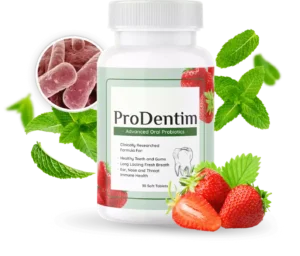

Your point of view caught my eye and was very interesting. Thanks. I have a question for you.